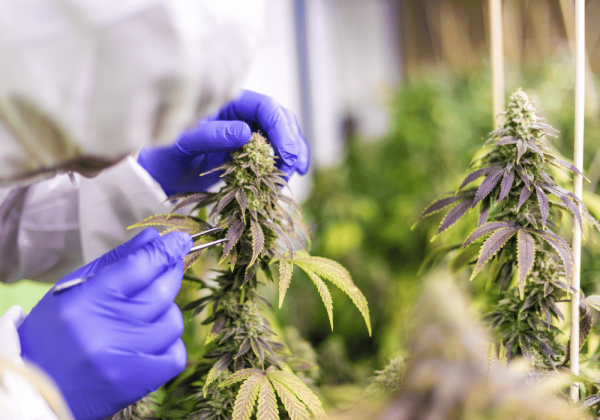The conversation around marijuana in Canada has shifted dramatically in recent years, transitioning from a once-taboo topic to a critical component of healthcare for many Canadians. With the legalization of medical marijuana in 2001 and the recreational use in 2018, Canada has been at the forefront of the global cannabis movement. However, the medical marijuana sector remains complex and often misunderstood. This post aims to explore the multifaceted landscape of medical marijuana in Canada, unpacking its benefits, regulations, and the future it holds.
The Evolution of Medical Marijuana in Canada
The landscape of medical marijuana in Canada has undergone significant transformation, reflecting changing societal attitudes and legislative modifications. It all began with the implementation of the Marihuana Medical Access Regulations (MMAR) in 2001, marking a pivotal moment by establishing a legal pathway for patient access to cannabis with a doctor’s recommendation. This regulatory framework evolved into the Marihuana for Medical Purposes Regulations (MMPR) in 2013, and further into the Access to Cannabis for Medical Purposes Regulations (ACMPR) in 2016. Each iteration of the regulations has made it easier for patients to access cannabis, broadened the criteria for eligibility, and improved the quality and safety of medical cannabis products.
The Importance of Regulatory Frameworks
Regulatory frameworks act as the backbone of the medical cannabis industry in providing legitimacy and ensuring the safety of patients. In Canada, Health Canada oversees the implementation of these regulations, focusing on promoting public health, ensuring product quality, and preventing diversion to the illicit market. The establishment of authorized licensed producers (LPs) has created a controlled environment for cultivating and distributing medical cannabis.
Accessing Medical Cannabis in Canada
Navigating the process of obtaining medical cannabis can be daunting for patients. Unlike traditional medications, cannabis is not prescribed but rather recommended. Patients must engage directly with healthcare practitioners who are willing to complete the medical document required by Health Canada. This document serves as the patient’s registration, allowing them to purchase from federally licensed sellers. The ACMPR offers three methods of access:
Growing Your Own Cannabis
Under the ACMPR, patients can request authorization to grow a limited amount of cannabis for their own medical reasons or have someone else grow the cannabis plants.
Cultivation by a Licensed Producer
Patients can acquire medical cannabis from a licensed producer and have it delivered to their homes, avoiding the complexities of cultivation and production.
Working with a Health-Canada-Authorized Distributor
Some patients may prefer to obtain their cannabis from a federally-licensed distributor for a more standardized and regulated product.
Addressing the Stigma and Misconceptions
Despite the legal framework, there remains a stigma associated with medical marijuana. Many perceive it as a gateway to recreational use or view patients as seeking to exploit the system. However, the research on the therapeutic benefits of cannabis for a myriad of medical conditions, from chronic pain to epilepsy, is burgeoning. It is imperative to debunk misconceptions and ensure that those in need can access this alternative treatment.
Educational Initiatives
 Educational campaigns play a crucial role in normalizing medical cannabis use. Healthcare providers, patients, and the general public all require up-to-date, evidence-based information on the uses, safety, and potential side effects of medical marijuana. Government initiatives and resources from advocacy groups are critical in disseminating this information.
Educational campaigns play a crucial role in normalizing medical cannabis use. Healthcare providers, patients, and the general public all require up-to-date, evidence-based information on the uses, safety, and potential side effects of medical marijuana. Government initiatives and resources from advocacy groups are critical in disseminating this information.
Understanding the Patient Experience
To truly address the stigma, it’s essential to understand the patient experience. Many medical cannabis patients have exhausted conventional treatment options without relief. For them, cannabis represents a last resort, and in many cases, offers a tangible improvement in their quality of life. Sharing patient stories can humanize the treatment and garner empathy from the broader population.
The Role of Cannabis in Palliative Care
One of the most profound impacts of medical cannabis is in palliative care, where the goal is to improve the quality of life of patients facing serious illness or chronic pain. Cannabis can be used to alleviate symptoms that are often unresponsive to traditional therapies, such as:
- Nausea and vomiting
- Appetite loss and cachexia
- Pain management
- Anxiety and insomnia
Innovations in Medical Cannabis Research
The Canadian medical community is actively engaged in cannabis research, exploring its potential across a spectrum of conditions. Researchers are investigating the efficacy of different strains and administration methods, the impact on specific patient populations, and potential interactions with traditional medications. This body of work is essential for further legitimizing the medical use of cannabis and guiding best practices.
Clinical Trials and Evidence
The gold standard of medical research, randomized clinical trials, are beginning to be conducted for cannabis-based medications in Canada. These studies are crucial for generating the evidence needed to support new pharmaceutical developments.
Addressing Knowledge Gaps
There are still many unknowns, particularly around the long-term use of medical cannabis. Addressing these knowledge gaps requires a multi-disciplinary approach and funding support for rigorous, long-term studies.
The Future of Medical Cannabis in Canada
The road ahead for medical cannabis in Canada is paved with opportunities and challenges. The industry is poised for growth, with increased demand, expanding legalization globally, and potential changes to Canadian regulations. However, key challenges remain in areas such as insurance coverage, standardization of dosages, and addressing the concerns of healthcare professionals.
Emerging Canadian Innovations
Canada has fertile ground for cannabis innovation, with businesses and researchers constantly pushing the boundaries. Emerging technologies for growing and harvesting, new delivery methods, and novel product formulations are all on the horizon.
Addressing Insurance Barriers
 A significant hurdle for patients is the cost of medical cannabis, which is not universally covered by insurance. Advocacy efforts to secure coverage, as well as increased competition driving down prices, could make cannabis more accessible.
A significant hurdle for patients is the cost of medical cannabis, which is not universally covered by insurance. Advocacy efforts to secure coverage, as well as increased competition driving down prices, could make cannabis more accessible.
Regulatory Changes and Public Support
The potential for regulatory changes that make access to medical cannabis easier and more widespread is gaining public support. With growing pressure, we may see further liberalization of regulations to help patients access this valuable treatment more easily. Looking for weed delivery or a dispensary in London, Ontario? Visit Cannabis Link for the best deals, quality, and pricing.
